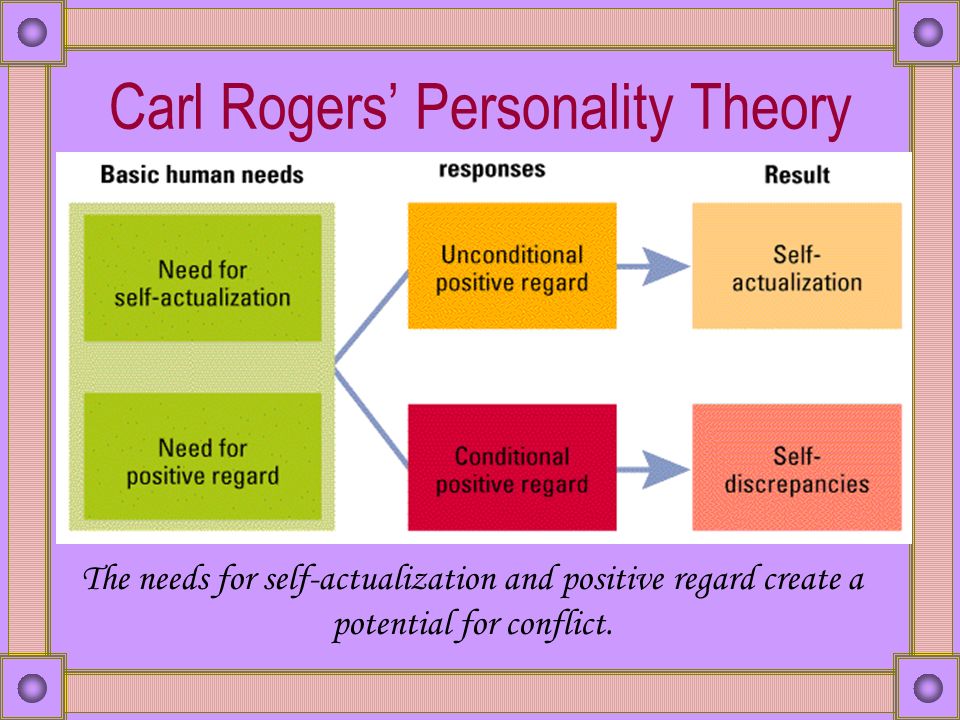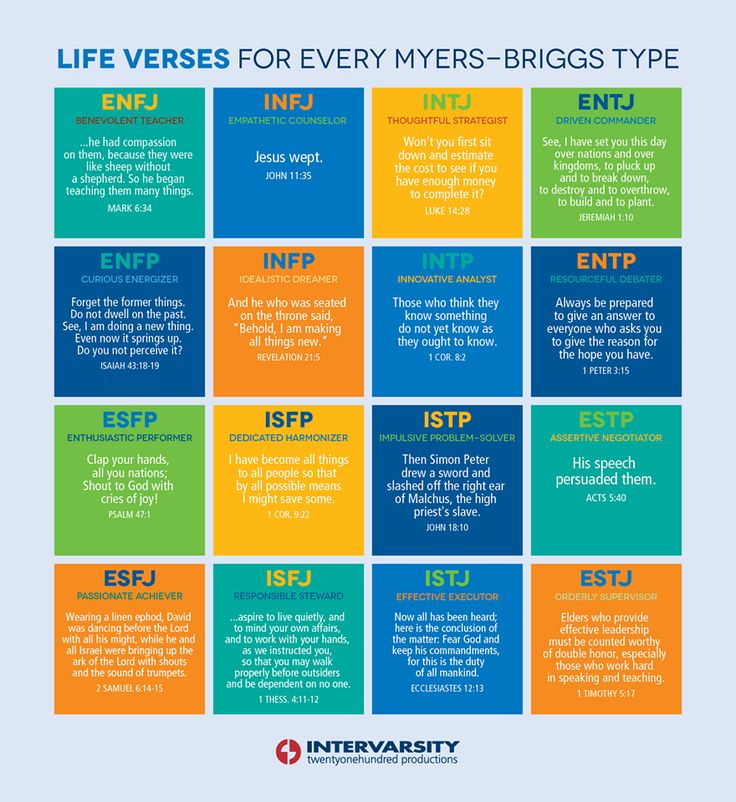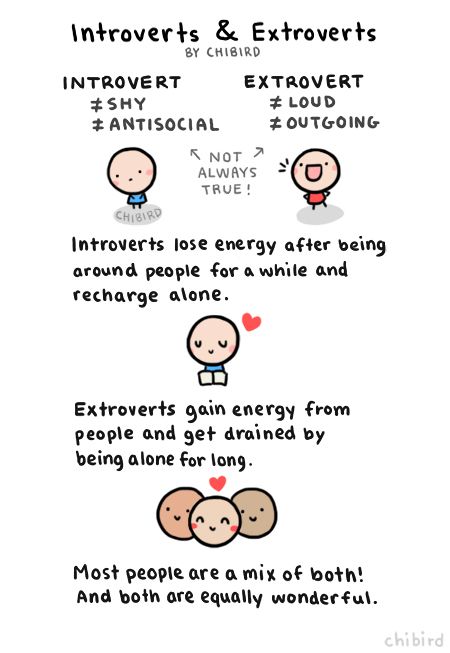Self concept carl rogers
Revisiting Carl Rogers Theory of Personality
Revisiting Carl Rogers Theory of Personality
A recent study collected information from surveys conducted among the members of the Association for Psychological Science and the American Psychological Association. The study identified the top 100 eminent psychologists of the 20th century. Not surprisingly, Skinner, Piaget, and Freud are the top three. What may be of interest is that Carl Rogers is ranked number 6.
Among the reasons cited is Rogers’ groundbreaking work in the development of humanistic or client centered therapy. What made it groundbreaking was his insistence that the model be subject to scientific inquiry and clinical trial. One result of his work was a psychological theory. In that work Rogers advanced a complex set of 19 propositions describing his theory. In this article we will make an effort to provide a brief overview of it.
To provide theoretical legitimacy to his clinical work, Rogers wrote 16 books and even more articles explaining how these 19 propositions worked on understanding the human personality. Among the most significant key points of Rogers’ approach is its redefining of the therapeutic relationship. Traditionally that relationship was defined by the theories of Freud and others where the therapist role was that of a leader and the patient as the follower.
Rogers argued that for the therapist/patient relationship to be effective, it must include an intentional relationship built on mutual trust and respect. In the later years of his work Rogers expanded his model to apply to other applications including a theory of personality, interpersonal relations, education, nursing, cross-cultural relations and other “helping” professions and situations.
Foundations of Roger’s Theory
The study of the human personality has grown in increasing complexity. What Rogers viewed as a ”missing link” in what were then the traditional methods of clinical treatment was what he identified as person-centered therapy. Among the principles he espoused was that within the treatments of his day there was an incongruence in those relationships.
Among the principles he espoused was that within the treatments of his day there was an incongruence in those relationships.
Early theories and methodologies such as Freud’s were seen as objectifying the patient thus creating an incongruent or out of synch relationship. Rogers called into question the psychoanalytical model replacing it with his humanistic psychology.
Again, it is important to acknowledge his goal in the development of “Rogerian psychotherapy”, validation through scientific study and clinical experience.
While there are many areas within Rogerian theory, one worth noting is known as the Phenomenal Field. This consists of perceived reality. The ever changing world of external and internal experience. Priority is given to what a person understands to be true (perceived reality) rather than what actually is true. Counseling begins with the phenomenal field.
Development of the Personality
Not unlike Freud’s reference to the soul, Rogers identified one’s self-concept as the frame upon which personality is developed.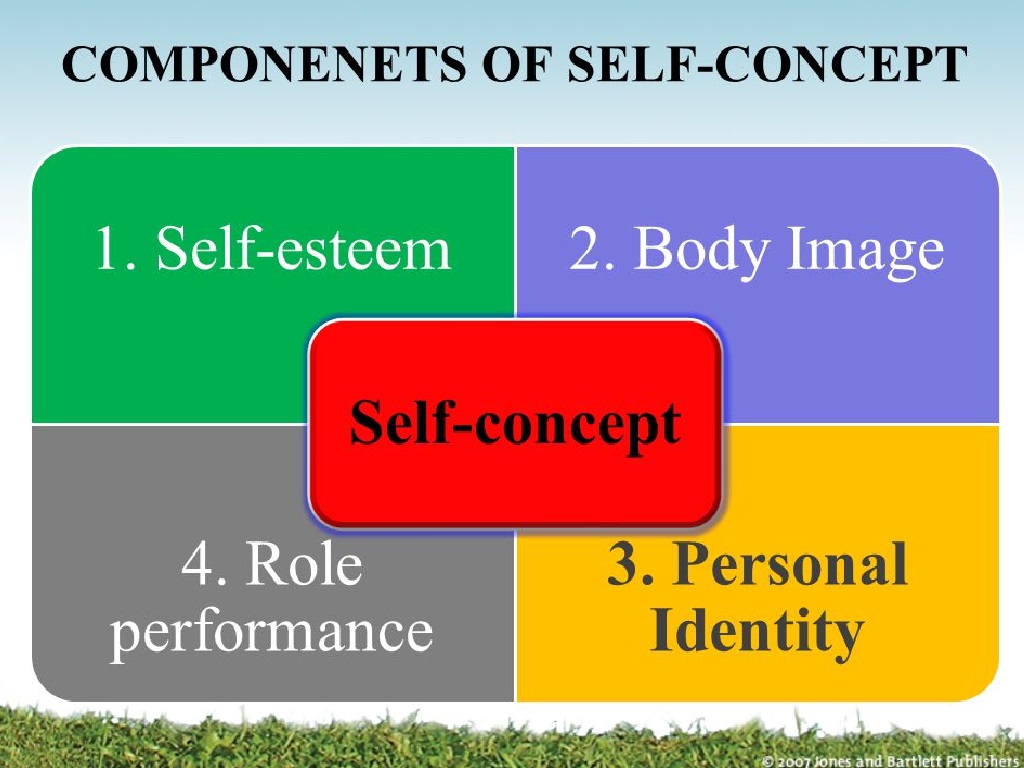 It is the purpose of each person to seek congruence (balance) in three areas of their lives. This balance is achieved with self-actualization. As illustrated below, self-actualization deals with three areas such as self-worth, self-image, and ideal self.
It is the purpose of each person to seek congruence (balance) in three areas of their lives. This balance is achieved with self-actualization. As illustrated below, self-actualization deals with three areas such as self-worth, self-image, and ideal self.
Self-actualization is impossible if these images (especially self-mage and ideal-self) don’t overlap. This is so called “incongruent” view and the role of therapist is to transform this view to a congruent one, both by adjusting person’s perception of self-image and self-worth as well as making an “ideal self” more realistic. The self-actualization process will lead to increasing overlap between these areas and will contribute to person’s satisfaction with life. Within Rogers’ schema each of the three areas has specific tasks. Until a person succeeds in self-actualization, they will have issues and remain out of balance in how they relate to their world.
Rogers emphasized that with regard to self-actualization the personality of each person is very unique.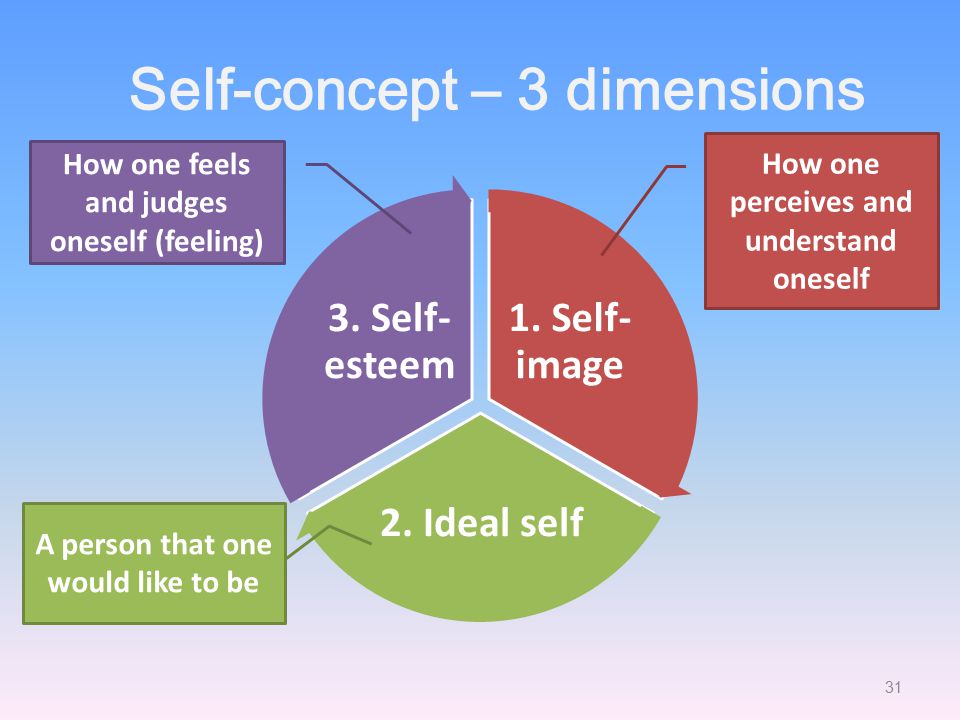 There are few “cookie cutter” personalities. It also brings into the therapeutic discussion the idea of a holistic view of the person.
There are few “cookie cutter” personalities. It also brings into the therapeutic discussion the idea of a holistic view of the person.
The Principles for Good Life
A goal that most people seek to attain, the good life as described by Rogers is achieved by the person fulfilling certain principles. In his studies Rogers found that there are commonalities among those people who are fully functional. These are:
- An acceptance of all experiences including those that are new.
- An existential lifestyle, in which each moment is appreciated and lived to its fullest.
- A trust level with one’s own decisions.
- Increasing freedom of choice
- Creativity and adaptability without necessarily conforming.
- Reliability and constructiveness in their dealings with others.
- A preference for living a rich, full life.
These traits are fluid in their expression with the person being capable of self-actualizing them.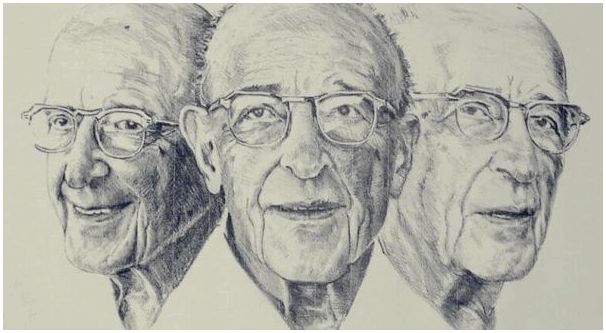
The Lessons of Rogers
Given Carl Rogers own wealth of contributions to his scientific and clinical work there is much to study and learn. Add to that other professional material addressing Rogers work and you have a lifetime of material available. The question here is the value of his work in the 21st century?
In this article at Psychology Today some of his most important and lasting contributions are discussed.
- Person centered therapy
- Unconditional positive regard
- Egalitarian counseling relationships
- Reflection as a therapeutic technique
- A counseling theory to train on
Most recently there has been a growing interest in the adaptability of Rogerian theory and practice. Several modalities are redefining terminology and practice with their application being used in today’s world of psychology. Included in this mix are:
- Cognitive Behavioral Therapy (CBT)
- Dialectical Behavioral Therapy (DBT)
- Acceptance and Commitment Therapy (ACT)
- Positive Psychology
Conclusion
As strongly suggested in this article “progress” in the field of psychology may be better measured as adaptability rather than change.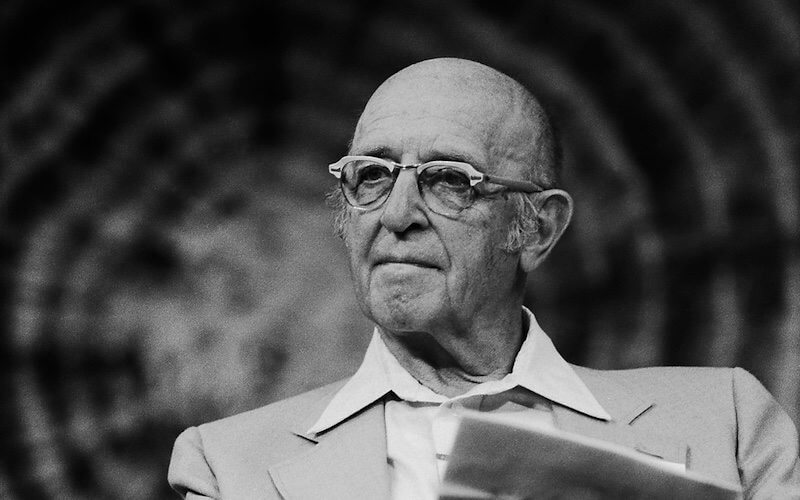 With few exceptions much of the current understanding in psychology of human personality has occurred through adapting previous theories. In particular, this adaptability is best understood through linguistics. Specifically, the meaning or definition given to words and phrases.
With few exceptions much of the current understanding in psychology of human personality has occurred through adapting previous theories. In particular, this adaptability is best understood through linguistics. Specifically, the meaning or definition given to words and phrases.
Case in point. If we were to trace the etiology of the word conscious and its derivatives we would find pre-19th century usage. With Freud and others the word changed to encompass super-ego. Rogers redefined and modified super-ego to mean self. As mentioned, today’s newer modalities continue this tradition of redefining and substituting words and phrases to better explain their own areas.
This comment comes without criticism, but rather to encourage the thoughtful study of what the field of psychology has to offer.
Carl Rogers, humanistic psychology, perceived reality, Phenomenal Field, principles for Good Life, principles for Happy Life, Rogers theory of personality, self-actualization, self-worth self-image and ideal self, therapeutic relationship
Meaning, with Rogers Theory of Self Concept
Page Contents
What is Self Concept?
Simply, Self-concept is what is your concept about yourselves.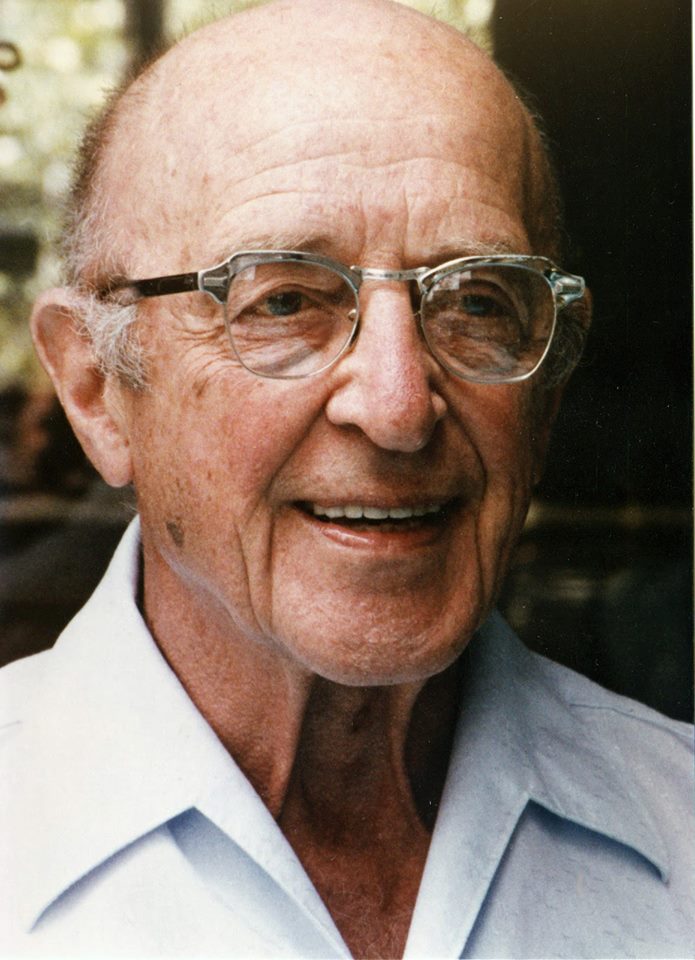 It is a perceiving way of your to yourself. For example, you perceive yourself as “I am a friendly person”, “I am a kind person”, “I am a bad person”, “I am a religious person”.
It is a perceiving way of your to yourself. For example, you perceive yourself as “I am a friendly person”, “I am a kind person”, “I am a bad person”, “I am a religious person”.
Carl Rogers: Theory of Self Concept
Carl Rogers is very influential as a psychotherapist. His theory can be divided into Self-concept and client-centered therapy.
Self Concept
Rogers’s theory of personality emphasizes “self-concept”. As human being develops they develop their self-concepts. It is of a conscious nature. It is how we perceive ourselves as “I” or “We” called subjective self. It develops through interaction with people in society. It is the perception of our abilities, behavior, and characteristics.
For example, if someone says you are a good singer, the singing ability enhances your self-concept. This ability goes on developing through interaction with others, receiving positive remarks.
Rogers further explained that a positive self-thought helps to be optimistic and build healthy ways of life whereas, a negative one leads to pessimism and unhappiness with depressive and frustrating signs.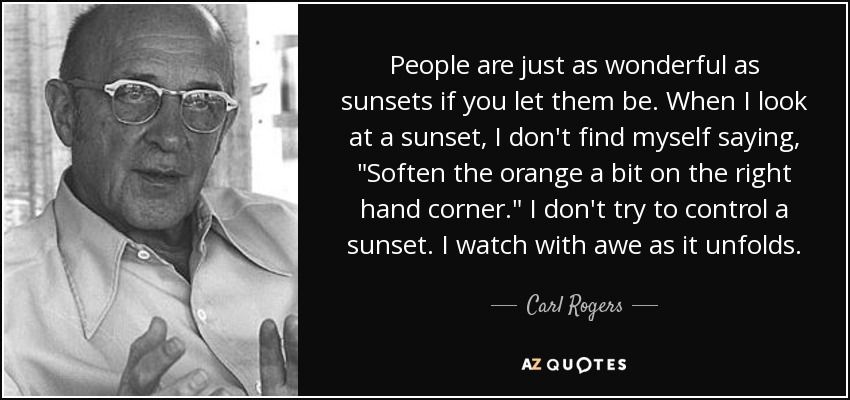
Rogers divided self-concept into two parts:
- The real self, and
- The ideal self
The real self is a subjective feeling as “I am” or “me”. The ideal self is one you would “like to be” as the “model” or as an example. For instance, if you would like to be a polite worker, you may like to be “Mahatma Gandhi.”
Rogers remarked that both self-concepts are essential. A broad gap between these two may generate difficulties of adjustment. If the ideal self is unrealistically out of reach, the person may feel frustrated and an inferiority complex may erupt. However, a slight difference may lead to the positive feeling enhancing it.
Sometimes the wrong self-concept can create signs of maladjustment. According to Rogers, this can be created through unconditional positive regard in which a person will be accepted by another person no matter what they say or do.
Client Centered Therapy
Roger’s client-centered therapy played an important part in psychotherapy highlighting personality.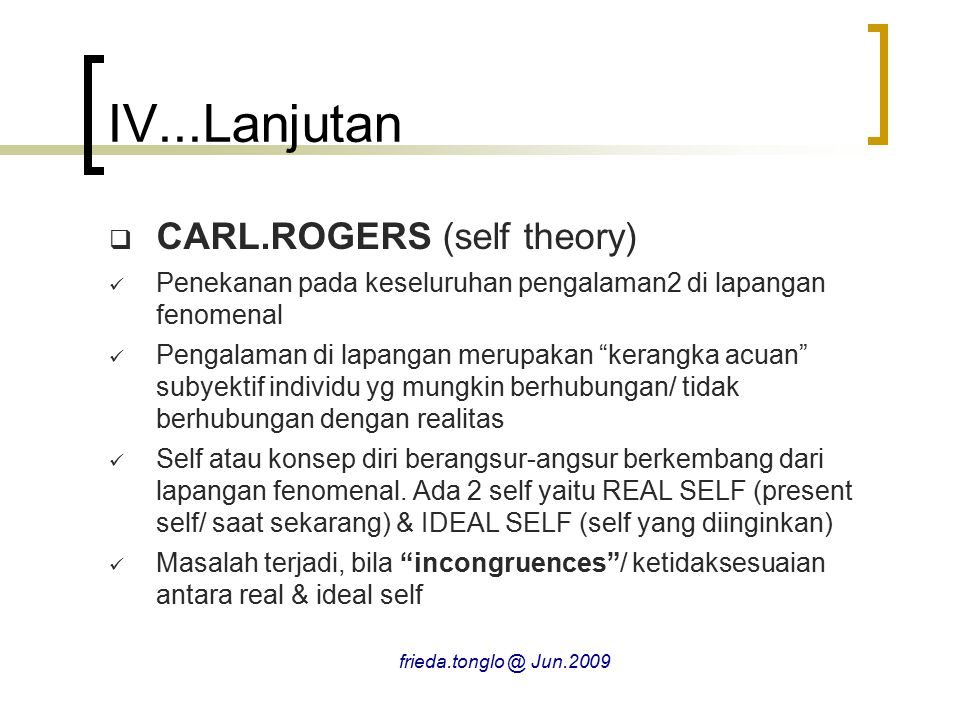 Client-centered therapy focuses on three important qualities of a counselor:
Client-centered therapy focuses on three important qualities of a counselor:
- Congruence (geniuses of feeling and interest): refers to integrating and being genuine toward the client’s feelings.
- Understanding and empathy (Warmth and sympathy): empathy is respecting the emotions and sentiments of others as one’s own self, and behaving accordingly.
- Unconditional positive regard refers to the genuine, caring, not possessive. It is acceptable as it is.
Roger’s contributions to the humanistic approach of personality are greatly highlighted and are significantly in use in explaining personality and treating human problems.
Like this:
Like Loading...
Carl Rogers, Self-concept: the concept of personality
"I"-concept is a defining construct in the approach of the American researcher and psychotherapist C. Rogers. In fact, this element is so integral to Rogers' theory that many psychoanalysts simply refer to it as "self theory.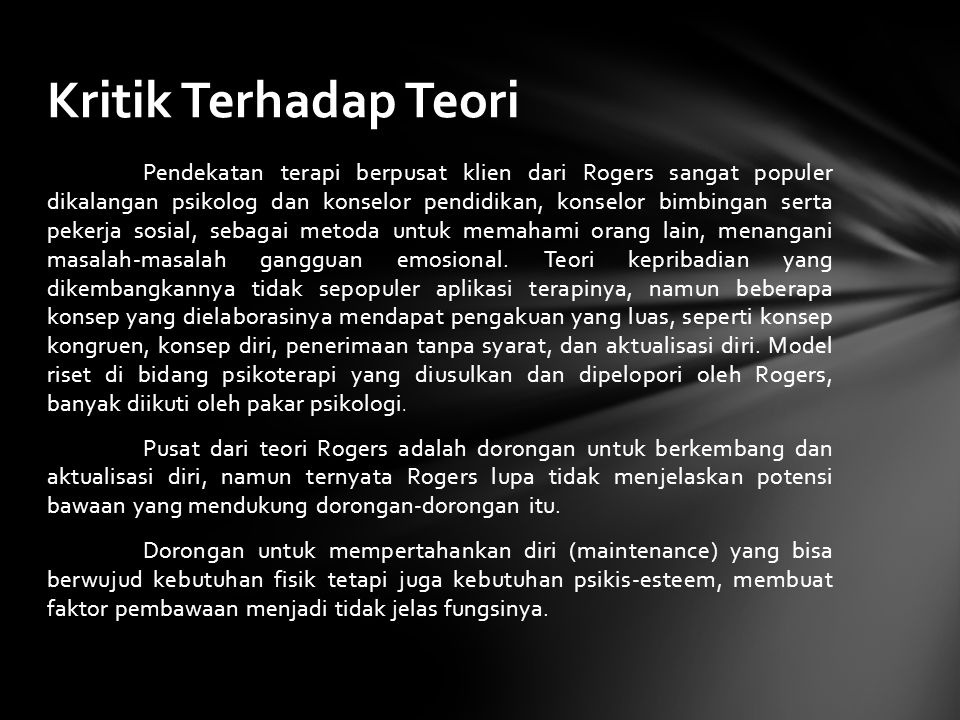 "
"
Differences in the theory of the researcher
In contrast to such psychoanalysts as Freud, Adler and Erickson, Rogers in the "I" concept did not create any scheme of critical stages through which, overcoming difficulties and stress, a person must necessarily pass in order to develop as a person. Rogers focused more on the fact that a positive or negative assessment of a child from the very first months affects his image of "I".
A newborn perceives the whole world as a whole, undivided. The infant does not distinguish himself as a separate entity and therefore does not make any distinction between what belongs to him and what does not. And consequently, the "I" does not exist for the newborn.
Appearance of "I" in an infant
Rogers in his "I"-concept said that in the process of its formation the "I" is regulated only by the evaluative process in the organism. In other words, the infant evaluates hitherto unfamiliar experiences in terms of whether they help or hinder his innate desire for actualization.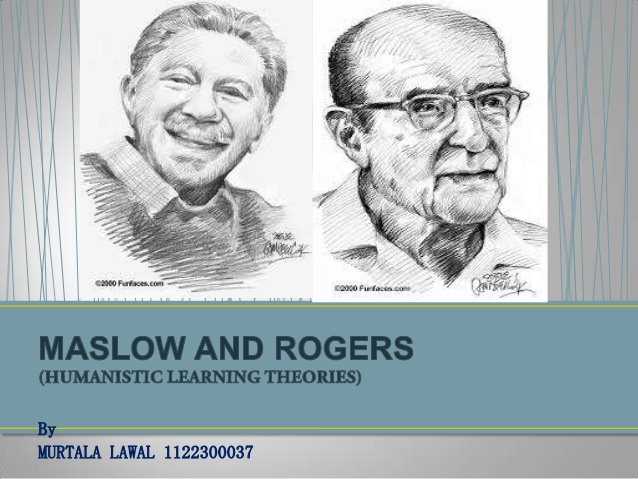 For example, cold or hunger, thirst or heat, or an unexpected loud noise are perceived as a threat to biological integrity. And so they are evaluated negatively.
For example, cold or hunger, thirst or heat, or an unexpected loud noise are perceived as a threat to biological integrity. And so they are evaluated negatively.
Food, water, food, rest are perceived positively, as they help to grow and develop. In a certain sense, such a biological control process allows you to correctly and timely meet the needs of the baby. The infant evaluates his own experiences for whether he likes them or not.
Subsequently, the personality structure is formed through interaction with the social environment. Significant others play the greatest role in this - mother and father, siblings. "I"-concept appears on the basis of interaction with other family members. And therefore, to a large extent, the contents that fill it are a product of the child's socialization.
Self-actualization
A distinctive feature of the concept of Rogers (and Maslow, who also emphasized self-actualization, striving for good in a person) is the thesis that every person is inherently good and strives for beauty.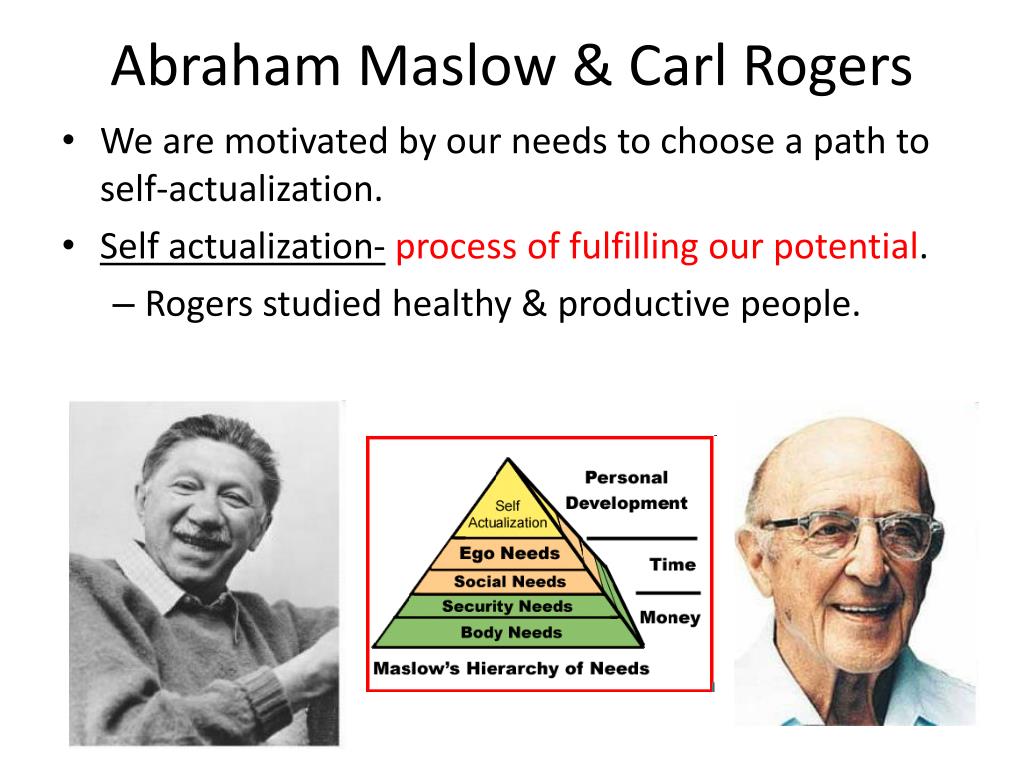 And therefore, people naturally move in the direction of greater differentiation, maturity, autonomy.
And therefore, people naturally move in the direction of greater differentiation, maturity, autonomy.
Exploring the nature of personality, Rogers comes to the conclusion that the essence of human nature is based on moving forward towards certain goals. It is constructive, correlates with the principle of reality. According to Rogers, Freud, the founder of psychoanalysis, created a picture of a completely irrational person who is not socialized and has destructive tendencies aimed at destroying himself and destroying everything around him. When a person feels psychological freedom, he is always open to new experiences and can act in a trusting and positive manner.
Psychological defenses
For the most part, a person's everyday behavior should always be consistent with his self-concept. Rogers emphasized that a person always strives to maintain a state of a certain self-perception, a coherence in the experience of his personality. From this follows the logical conclusion that all experiences that are in harmony with the Self-concept can be realized by a person, assessed quite accurately. And as for those experiences that are in a conflict position in relation to the personality, they form a threat to the "I". And therefore, such experiences and thoughts are not allowed to be realized and accurately perceived. It should be noted that the human concept is the criterion according to which all experiences are either compared, or are symbolized in consciousness, or such symbolization is completely denied.
And as for those experiences that are in a conflict position in relation to the personality, they form a threat to the "I". And therefore, such experiences and thoughts are not allowed to be realized and accurately perceived. It should be noted that the human concept is the criterion according to which all experiences are either compared, or are symbolized in consciousness, or such symbolization is completely denied.
Clash of concepts: example
For example, religious parents convince a young man that it is a great sin to enter into a close relationship with a girl before marriage. But at the same time, the young man attends college and finds other attitudes and values among his peers. His peers approve of such behavior, especially if there is love between young people, they are faithful to each other. The young man still adheres to the principles that were instilled in him from childhood. He meets a girl who shares the worldview of other college students and falls in love with her. At the same time, he yields to the girl, but the relationship becomes painful for him. They simply do not fit into the image of "I" that he has been creating since childhood.
At the same time, he yields to the girl, but the relationship becomes painful for him. They simply do not fit into the image of "I" that he has been creating since childhood.
Threat to integrity
In Carl Rogers's "I" concept, a threat can exist when people are directly aware of the discrepancy between their image of themselves (as well as the values associated with this image) and a certain aspect of the present experience that is relevant to them at the moment moment. Experiences that are completely inconsistent with their self-image are subjectively perceived as threatening. They are not allowed to reach the threshold of awareness, because in this case the unity and integrity of the personality is violated. For example, if a person considers himself decent and honest, and some act he does not correspond to these ideas of his, then the “I” will be under threat. The reaction usually includes feelings of guilt, confusion, and anxiety.
Not always the discrepancy between the actual "I" and its image can be perceived at the same time on a conscious level.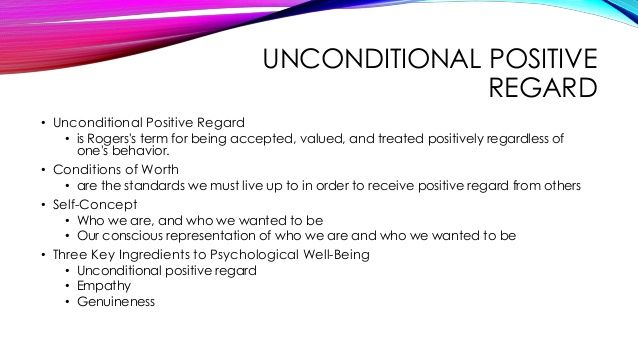 In the theory of the "I"-concept, Rogers says that situations are not uncommon when a person feels threatened, but does not realize it at all. When there is such a discrepancy, the individual becomes at risk of various mental disorders.
In the theory of the "I"-concept, Rogers says that situations are not uncommon when a person feels threatened, but does not realize it at all. When there is such a discrepancy, the individual becomes at risk of various mental disorders.
Anxiety then turns into an emotional reaction to a threat to personal unity. An anxious person, then, is one who vaguely understands that the recognition of one or another of his experiences will lead to a radical transformation of his present personality. Awareness of the ingrained feeling of hostility will require a global reorganization of the entire "I"-concept of the person who hitherto considered himself loving and gentle. He will start to worry whenever he feels anger.
In his concept of personality, Rogers emphasizes that if a person is not threatened by anything for a long time, he becomes open to interaction and experiences. He doesn't need to defend himself at all. But if he understands or feels on a subconscious level that his current experience is somehow not consistent with the "I"-concept, then there will be a threat.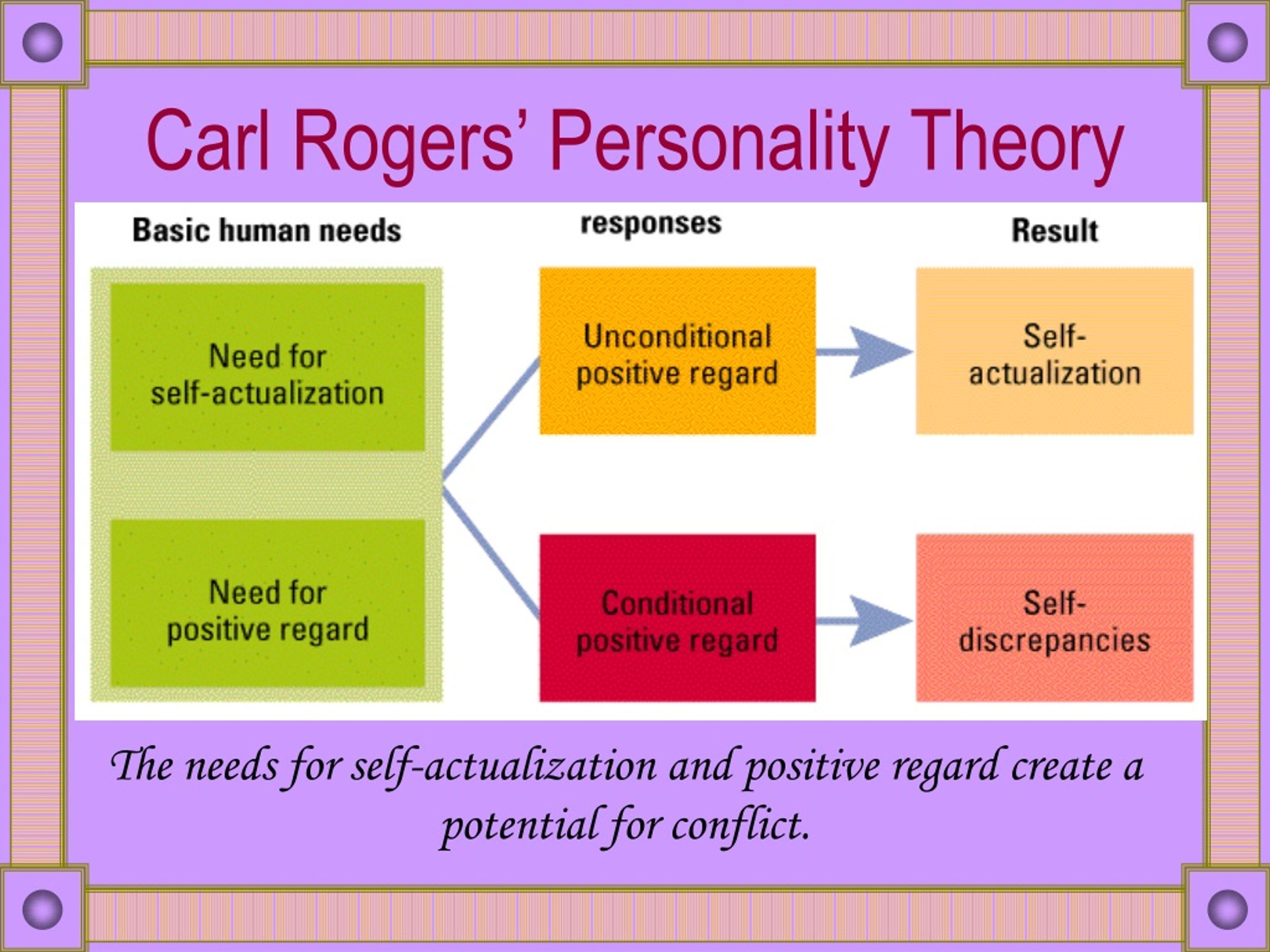 It is followed by a defensive reaction according to the logic of events. K. Rogers in the "I"-concept defined defense as a specific behavioral reaction of the body to a threat from the outside. Its main purpose is to keep the personality whole. The psychologist wrote that such a goal is achieved through a conscious distortion of a certain experience in the human mind. This distortion helps reduce the difference between the negative experience of guilt and the self structure. In other words, protection helps to maintain self-esteem and protects it well from the danger of feelings of fear, guilt, anxiety.
It is followed by a defensive reaction according to the logic of events. K. Rogers in the "I"-concept defined defense as a specific behavioral reaction of the body to a threat from the outside. Its main purpose is to keep the personality whole. The psychologist wrote that such a goal is achieved through a conscious distortion of a certain experience in the human mind. This distortion helps reduce the difference between the negative experience of guilt and the self structure. In other words, protection helps to maintain self-esteem and protects it well from the danger of feelings of fear, guilt, anxiety.
Rogers' defense mechanisms
The psychologist suggested only two defense mechanisms. They are used to minimize information about the discrepancy between the "I" and the negative experience. This is a perceptual distortion as well as a denial. However, it should be noted that an experience that threatens a person is not allowed in a person's awareness to be symbolized. This happens not because it somehow contradicts the moral norms established by the individual, or is “sinful”.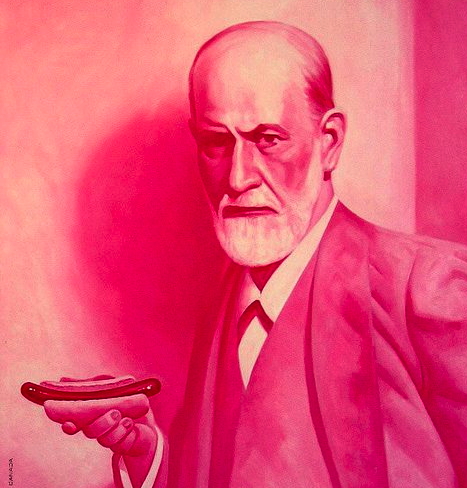 Symbolization does not occur due to incompatibility with the "I"-structure. Therefore, defensive behavior preserves the existing personality structure and allows the individual not to lose self-respect.
Symbolization does not occur due to incompatibility with the "I"-structure. Therefore, defensive behavior preserves the existing personality structure and allows the individual not to lose self-respect.
Distortion of perception occurs when an inappropriate experience is allowed into the consciousness of a person, but only in a form that allows this experience to be compatible with a certain aspect of the personality image. For example, a university student considers himself capable of chemistry. However, suddenly he gets a bad grade, and it is completely deserved. A student may try to maintain his "I"-concept if he distorts the explanation of his failure: "The teacher gives unfair grades", or "Today I was not lucky." Rogers explains this selective perception as rationalization. In this example, the student's experience is perceived by the student, but its real meaning remains incomprehensible. In fact, denial occurs whenever the individual does not want to admit to himself that the experience actually took place.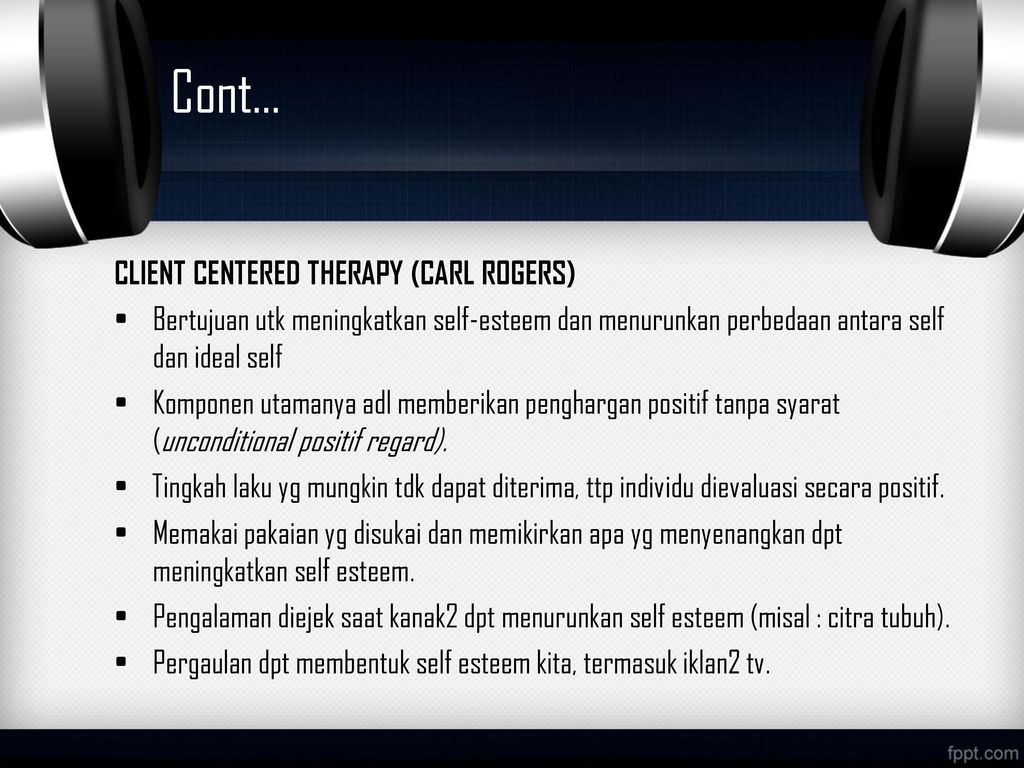
Psychopathology according to Rogers
The described provisions of Rogers' "I" concept, briefly described in this article, can be applied to each person. Even the most psychologically well-off person can sometimes encounter an unpleasant experience that threatens his "I"-concept, and he has to misinterpret this or that experience.
Most people have adequate mental protection that allows them to cope with moderate levels of stress and anxiety and act in a way that minimizes this anxiety. However, if internal experiences are completely inconsistent with the “I” structure, or if inconsistent experiences occur too often, then a person begins to experience extremely strong anxiety that violates his daily routine. As a rule, such a person is called a neurotic.
Rogers himself strove to avoid such diagnostic labels. In such cases, the level of discomfort in the individual is such that he, apparently, needs the help of a therapist. However, the protection of the neurotic can also to some extent prevent the destruction of his "I".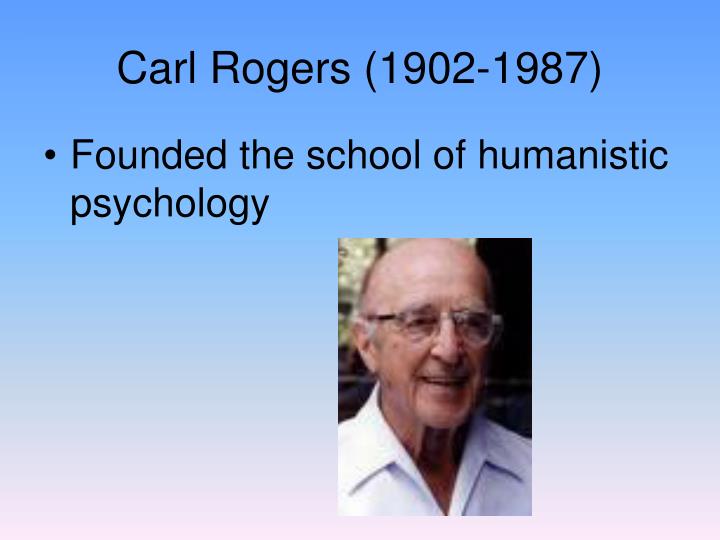 As a result, the neurotic personality retains its structure, but the person is unable to adequately assess the instability of his state. He becomes very vulnerable in a psychological sense.
As a result, the neurotic personality retains its structure, but the person is unable to adequately assess the instability of his state. He becomes very vulnerable in a psychological sense.
Rogers Didactic Concept
The researcher was not satisfied with the traditional education system. He believed that lessons and exams only interfere with the learning process, and the authority of the figure of the teacher should be questioned. He proposed a new learning model. In it, the teacher should be guided by his life experience, and the students should build their own training program. A favorable psychological climate for learning should be created in the classroom. And strict discipline should be replaced by self-discipline.
Criticism of the ideas of K. Rogers
Many authors emphasize that C. Rogers looks at a person too positively. It is foolish to conduct psychotherapy, relying only on the desire for self-actualization and not recognizing the shadow side of the personality.
The concept of marriage by K. Rogers, who postulated the correctness of "open" relationships in marriage (sexual relations of both partners outside the family), was also criticized. The psychologist believed that such an approach contributes to the development of personality.
29. Self-concept of Carl Rogers
29th Rogers concept consists of 2 concepts: I-real and i'm perfect
Phenomenological focus theory Rogers implies, what is real for the individual only what exists within subjective experience of a person. Behavior man can only be explained positions of its coordinate system, which in each particular case, strictly individual. It is possible to understand a person only in the context of his psychological reality, “looking at the situation of his eyes”, comprehending his inner world.
An important point in theory Rogers is Self-concept is a subjective representation a person about himself, about his interaction with the world, as well as the values associated with these representations.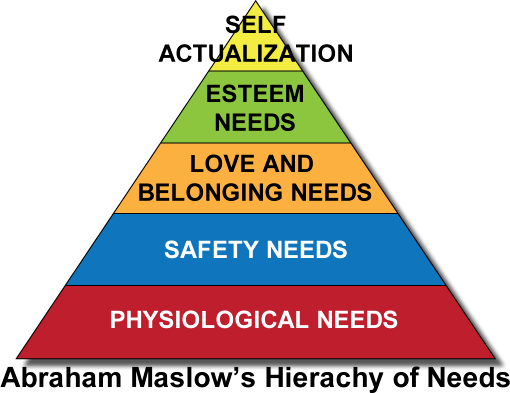 I-concept available to awareness, although not necessarily is realized. In other words, the self-concept reflects the characteristics that a person perceives as part of himself, it often reflects how we see ourselves due to the various roles we play in life.
I-concept available to awareness, although not necessarily is realized. In other words, the self-concept reflects the characteristics that a person perceives as part of himself, it often reflects how we see ourselves due to the various roles we play in life.
Self-concept includes not only our representations about who we are, but also about who we are would like to be. This component Rogers called I-ideal. It's all those the characteristics that the person wanted would have, but does not yet possess.
This The "I" that a person values most and towards which it aspires.
I- concept is characterized by sufficient integrity, although it may change as a result of new experience. Despite changes, people remain the feeling that they are themselves.
Self-concept formed from early childhood based on the evaluation of the child by others people. At first the baby does not share themselves and the world around them - that is, not has a self. As he develops learns to distinguish oneself from the rest world, begins to feel like a separate object that is the basis for subsequent formation of the self-concept. The development of the self-concept is a decisive influence provided by the immediate social environment parents, siblings, others relatives. For adequate formation I-concepts need positive attention - universal stable human need.
As he develops learns to distinguish oneself from the rest world, begins to feel like a separate object that is the basis for subsequent formation of the self-concept. The development of the self-concept is a decisive influence provided by the immediate social environment parents, siblings, others relatives. For adequate formation I-concepts need positive attention - universal stable human need.
Need plays an important role in positive attention role in education when children receive representation that certain behavior approved by adults and leads to positive attention, and the other - deprives. This so-called conditioned positive attention , or value condition. According to Rogers, the value condition harms the child in its development as a full functioning individual - he is dependent from the opinions of others, limits his experience only what is approved by significant close ones.
By Rogers' opinion, an unconditional positive attention is a must updating the child.
This means that the child is loved without any terms and conditions. It doesn't mean atmosphere of permissiveness - just the child is not deprived of love under any circumstances, even if he yourself unbearably.
Rogers allocated following characteristics of fully functioning people:
Openness experience - the ability to perceive their deepest feelings and thoughts, including the negative ones.
Existential lifestyle - the tendency to live fully, consciously and saturated at every moment existence.
Organic trust is the ability to make decisions, focusing on their own internal sensations rather than external authorities and own patterns of behavior of the past.
Empirical freedom is the ability to live freely, without restrictions and prohibitions, that is man is capable of doing everything he wants - but only he answers for your own actions.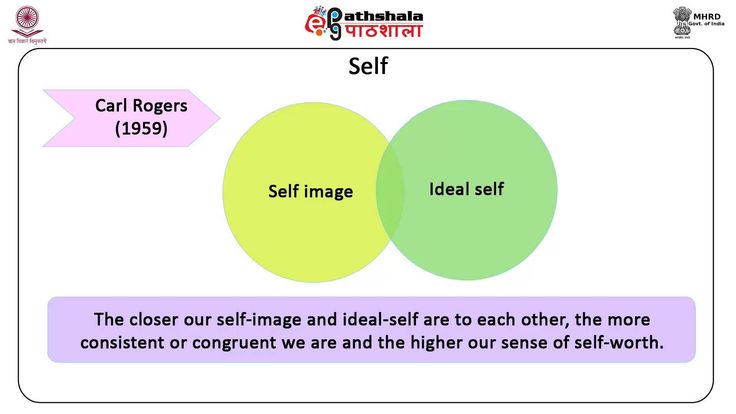
Creativity - the ability to creatively, flexibly resolve life's challenges and adapt to changing environmental conditions.
According to views Rogers , psychological problems arise in if some new experience (on level of behavior or emotion) is inconsistent with the self-concept of the individual, as a result what causes anxiety. Moreover, this the discrepancy may not be recognized. When the integrity of the self-concept is threatened defense mechanisms may work. aimed at preserving representations a person about himself and his own values. Rogers singled out two such mechanism:
1) distortion of perception;
2) negation.
If the mechanisms protection does not help and human experiences inconsistent with his self-concept (incongruence), anxiety can rise to a neurotic level. At complete ineffectiveness of protection can psychotic disorders occur when "I" is not able to protect itself from onslaught of threatening experiences. According to Rogers theories, all mental disorders can be divided into three groups in relation to experience incongruence:
According to Rogers theories, all mental disorders can be divided into three groups in relation to experience incongruence:
Disorders without experience of incongruity: these patients have the disorder with their self-concept when suffering more environment of the patient than himself. Disorders with compensated feeling incongruence: although there are symptoms due to incongruences, but they are not experienced as threatening because there is sufficient tolerance for incongruity. For example, a person has a compensated anxiety disorder, let's say simple a phobia that goes well with I-concept.
Disorders with decompensated experience incongruence: one notices, at least sometimes, that he is incongruent, and has motivation to change. This includes many neurotic disorders: depressive, phobic, anxious, obsessive, dissociative and somatoform disorders, and adjustment disorders.
In this way, disorder, according to Rogers, is associated with inability to integrate new experience, which may be, in particular, related, with a rigid dysfunctional self-concept.